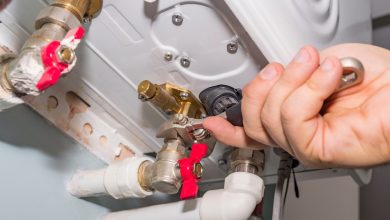Common Documents That Require Notarization in Newport Beach

Notarization is a key step in many personal, financial, legal, and real estate transactions. In Newport Beach, as in the rest of California, a wide variety of documents require a notary public to witness and verify the signing process. Whether you’re completing a real estate deal, granting power of attorney, or simply signing an affidavit, a notary ensures the document is legally valid and properly executed.
In this post, we’ll walk through the most common types of documents that require notarization in Newport Beach, and why notarization is such an important part of these transactions.
Why Certain Documents Must Be Notarized
Notarization is used to:
- Verify identity of the person signing
- Ensure willingness and understanding of the document’s contents
- Prevent fraud and unauthorized signatures
- Add legal weight to the document
Many institutions and agencies won’t accept a document unless it’s properly notarized. Let’s explore the types of documents you’re most likely to need notarized.
1. Real Estate Documents
Newport Beach is a high-activity area for real estate, and notarization is critical in almost every property transaction. Common real estate documents that require notarization include:
- Grant deeds and quitclaim deeds
- Mortgage and loan documents
- Deeds of trust
- Refinancing documents
- Lien releases
- Property transfers
Because these documents impact ownership and financial liability, notarization is required to ensure authenticity and prevent fraud.
2. Power of Attorney (POA)
A Power of Attorney gives another person legal authority to act on your behalf. It’s a serious document and must be notarized to be valid in California.
Types of POA that require notarization:
- General Power of Attorney
- Durable Power of Attorney
- Medical Power of Attorney
- Financial Power of Attorney
In Newport Beach, many healthcare and financial institutions won’t accept a POA without notarization.
3. Wills and Trusts
While California does not technically require notarization of a last will and testament (witnesses are usually required instead), many people still choose to have it notarized for added credibility and to avoid disputes.
Notarization is commonly required for:
- Living Trusts
- Revocable and irrevocable trusts
- Certification of trust
- Advance healthcare directives
These documents often involve significant assets and decisions, so notarization provides an added layer of legal protection.
4. Affidavits and Sworn Statements
Affidavits are written statements made under oath and are often used in legal or administrative settings. To be valid, they must be signed in the presence of a notary who administers the oath.
Examples include:
- Affidavit of identity
- Affidavit of residency
- Affidavit of support (for immigration)
- Sworn statements in court cases
These documents are considered evidence, and notarization ensures their authenticity.
5. Financial and Loan Documents
Banks, lenders, and financial institutions often require notarization for:
- Promissory notes
- Loan agreements
- Credit line applications
- Debt settlements or restructuring agreements
Especially in real estate and business lending, notarized financial documents protect both lender and borrower.
6. Business and Corporate Documents
Businesses in Newport Beach often require notarization for:
- Partnership agreements
- Articles of incorporation
- Corporate resolutions
- Minutes of meetings (for legal filings)
- Vendor or contractor agreements
Notarizing these documents ensures their authenticity and legality in both internal and external matters.
7. Parental Consent and Minor-Related Forms
If you’re a parent or guardian in Newport Beach, you may need notarization for:
- Consent for a minor to travel
- School enrollment documents
- Authorization for medical treatment of a minor
- Custody or guardianship agreements
Notarization helps confirm the identity and consent of the parent or legal guardian involved.
8. Immigration Documents
While not all immigration-related forms require notarization, certain supporting documents do. These may include:
- Affidavits of support
- Letters of invitation
- Sworn statements for visa applications
In these cases, notarization adds credibility and helps meet government requirements.
9. Vehicle and DMV Documents
The California DMV often requires notarized signatures for:
- Vehicle title transfers
- Release of liability forms
- Duplicate title requests (if there’s a discrepancy)
When selling or buying a vehicle privately in Newport Beach, notarization may be requested for added assurance.
Final Thoughts
In Newport Beach, notarization is essential for a wide range of personal, legal, and financial transactions. From real estate deals and business contracts to affidavits and healthcare directives, having a licensed notary verify your documents provides protection, credibility, and legal validity.
Whether you’re working with a local notary office or scheduling a mobile notary to come to your home or office, understanding what needs to be notarized is the first step in keeping your paperwork in order and your transactions compliant.
If you’re unsure whether your document needs notarization, consult a trusted notary public in Newport Beach. With professional guidance, you can ensure your documents are prepared correctly—and securely notarized the first time. We recommend notary newport beach.


